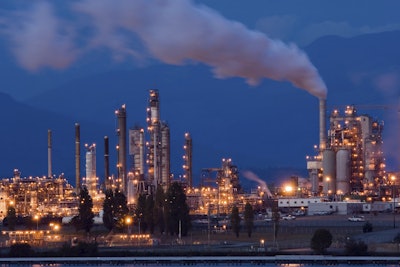
You know that the manufacturing conditions in the U.S. are favorable when Chinese companies are building plants here and not at home. At least this is the case in the chemicals industry, where companies (including Chinese firms) are investing in shiny, new projects and bringing plants online at a head-spinning pace.
An abundance of low-cost natural gas produced by the fracking boom has been the main driver making chemical manufacturing in the U.S. more lucrative.
Most of the investments are underway or slated for the Gulf Coast region. The American Chemistry Council (ACC) estimates that the announced investments for U.S. chemical projects linked to affordable natural gas has reached $179 billion. All told, ACC estimates that these new projects will create an estimated 462,000 indirect and direct jobs.
Many of these projects — including a new Dow plant that the company calls the “crown jewel” of its Gulf Coast expansion plans — are ethane cracker plants that produce ethylene, a primary building block in most plastics.
Shell also has plans to build a $6 billion polyethylene plant in Pennsylvania — the largest of its kind outside the Gulf Coast region. The company estimates that the new plant will produce 1.6 million tons of polyethylene each year.
But will the good times last?
According to a recent report in Financial Times (FT), this question is where the industry is becoming more split.
Some of the polyethylene coming online in the next two years — an estimated 34.2 million tons by 2018 — will be manufactured for export and bound for Asian markets. Thus, the new plants are partly a gamble that depends on global demand continuing to outpace supply.
Along with Dow and Shell, several other companies have been willing to roll the dice on petrochemical projects including Exxon, Phillips 66 and Chevron.
The move can be particularly attractive to oil companies looking to diversify away from fossil fuels. France-based Total, for example, recently announced it’s making the company’s biggest-ever investment in petrochemicals by building a new ethane plant in Texas.
But other companies are taking a more restrained approach. As FT notes, LyondellBasell has opted to expand capacity at existing plants rather than building from the ground up.
Even Dow’s CEO, Andrew Liveris, recently indicated that the chemical behemoth might scale back the pace of big investments. FT reports that on a call to investors last month, Liveris said that the company only plans “incremental” upgrades in capacity.
Yet, even if those companies sense that the bubble could burst, ACC predicts that capital spending in the industry will continue to surge in the coming years from $40.8 billion in 2016 to $58.6 billion by 2021.
Gas price projections remain at historical lows for 2017.
Meanwhile, many companies are instead seeking growth through mergers, including Dow, of course. And natural gas prices are expected to continue driving M&A activity in the petrochemicals sector.






















